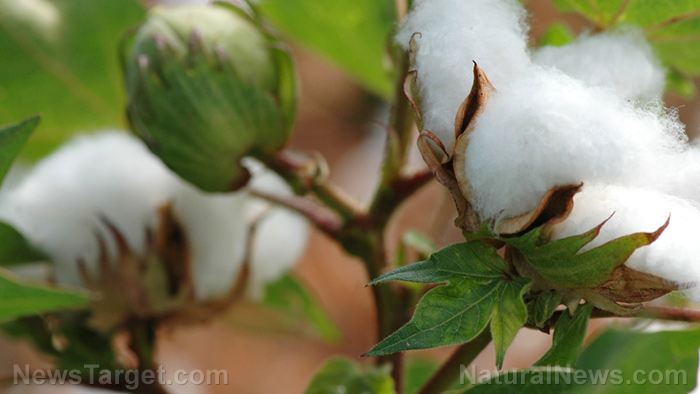Vegan-friendly fashion found to be surprisingly bad for the environment
07/15/2018 / By Ethan Huff

People who avoid fur and other animal-based materials in clothing, believing that this conscious choice makes for a better environment and planet, could be doing more harm than good in the long run, experts now say.
That’s because vegan-friendly clothing is often made from synthetic fibers that, more often than not, are derived from petroleum and other environmentally-unfriendly components that create an enormous amount of pollution. Because these artificial materials don’t biodegrade like natural ones typically do, they’re generally negative when it comes to their environmental impact.
The other major problem with synthetic, animal-free textiles is that they don’t last nearly as long as, say, leather does – which means a whole lot more of these materials has to be manufactured, and much more often, creating excess material waste that’s highly damaging to the environment.
A lot of it stems from a misguided belief among many environmentalists that avoiding animals is automatically “good” for the environment, and that choosing synthetic alternatives is much more sustainable or “green.” But this is hardly the case.
“We’ve got these two uber issues – animal welfare and overconsumption of plastic – that are coming up against each other,” says Sydney, Australia-based sustainable fashion consultant Clara Vuletich, as quoted by New Scientist.
Something like natural sheep’s wool – a renewable resource, seeing as how it continually regrows on the animals’ bodies – is actually one of the most environmentally-friendly materials out there. It’s sustainable, lasts a very long time, and doesn’t pollute the environment after being disposed of – which can’t be said about many of its alternatives, including animal-free cotton.

“Maybe you could go for a thick, quilted cotton jacket, but even then, cotton farming typically uses a lot of water and pesticides,” adds Vuletich.
It’s time to rethink sustainability, environmental friendliness, and the purpose of animals
The issue is hardly black and white, as there are good ways to grow cotton as well as bad ways. The same can be said for animal-based materials like wool and leather, both of which can be produced humanely without creating a major environmental burden.
It starts with shedding the mindless dogmatism that says animal-based equals “bad,” and animal-free equals “good.” There’s obviously a whole lot more to it than that, which is why some in the fashion industry are working to reframe the narrative.
One company, known as Mango, is doing just that. Its Mango Committed line of clothing is manufactured with a range of environmentally-friendly materials that include sustainably-grown organic cotton, recycled polyester, and even a product known as Tencel made from sustainable wood fiber.
Organic cotton, believe it or not, actually requires far less water than conventional cotton – up to 90 percent less – not to mention the fact that a large percentage of conventional cotton is genetically-modified (GMO), meaning it has to be sprayed with deadly crop chemicals in order to generate profitable yields.
Getting back to the issue of leather, it’s important to keep in mind that there are different types of leather that have varying degrees of environmental impact. According to the Higgs Materials Sustainability Index, bovine (cow) leather is more harmful to the environment than kangaroo leather, which is actually the most sustainable material on the index.
Another factor is individual use patterns of clothing, as some people wear clothes for far longer than others. Determining sustainability is thus a complicated matter with no one-size-fits-all standard to determine what’s truly “friendly” to the environment and what isn’t.
“Once a synthetic jacket ends up in a landfill, it’s never going to break down,” says Lisa Heinze, a Ph.D. student at The University of Sydney, warning that sustainability metrics almost never take into account important factors such as this.
Sources for this article include:
Submit a correction >>
Tagged Under:
animal-free, clothing, conservation, cotton, Ecology, environ, environment, ethical, ethical textiles, fashion, GMO, green living, materials, misinformation, Organic, petroleum, polyester, sustainable, textiles, vegan
This article may contain statements that reflect the opinion of the author





















